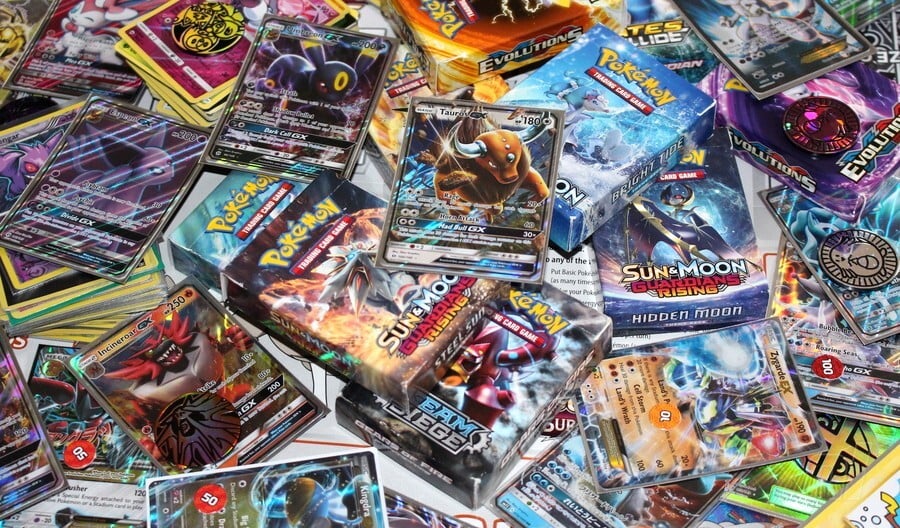
Since launching way back in December 1996, the Pokémon Trading Card Game has been an ongoing concern ever since and is the most popular and played aspect of competitive Pokémon - even more so than the video games, incredibly. However, while it's beloved of youngster in playgrounds all over the world, it's a game of surprising tactical depth and complexity, which has led to many fans simply collecting the cards rather than playing with them. If you're intimidated by the sheer scope of the Pokémon Trading Card Game, don't feel downhearted - you're not the only one out there.
What follows below is a very basic beginner's guide to the Pokémon Trading Card Game which will explain the core foundations of the game and hopefully allow you to overcome your nerves and get stuck in. This won't give you all the intricacies of the game, but it's a good starting point to get you on your way to understanding the mechanics.
Subscribe to Nintendo Life on YouTube841k
Pokémon Trading Card Game: The Basics
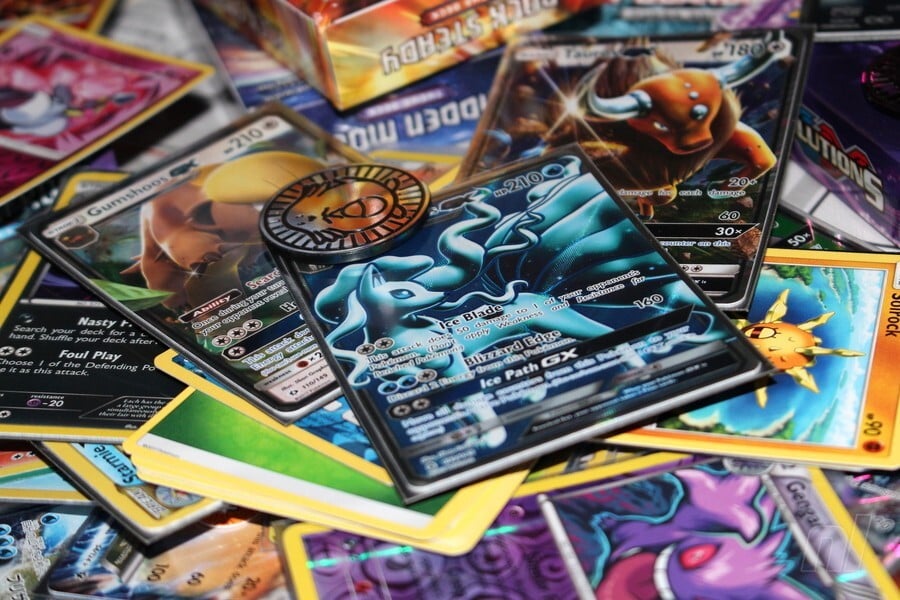
The Pokémon Trading Card Game is much like the video games in which Pokémon types come into play. Pretty much every Pokémon card has got a Weakness, and many have got a Resistances.
There are 11 different types of Pokémon cards in the game: Colorless, Darkness, Dragon, Fairy, Fire, Fighting, Grass, Lightning, Metal, Psychic and Water, with the Pokémon's type typically representing the Pokémon in game but as there are fewer, some types are combined into one such as Ground, Rock and Fighting all being Fighting. So, for example, you will find both Fire and Psychic cards for Salazzle.
Each Pokémon has specific Hit Points, which determine its health and some Pokémon can only be played by evolving their lower evolutions.
You can only have 4 of each card with the same name in your deck, but if the Pokémon has a suffix or prefix, you can have additional ones; so you can only have 4 Celebi in your deck, or you can have 4 Celebi & 4 Celebi EX or 4 Vulpix & 4 Alolan Vulpix, and so forth.
Energy cards are key. They are essential for allowing your Pokémon to use Attacks. Each attack has a cost of how many Energy you need attached to the Pokémon in order to use it, and typically the better the attack, the higher the cost. You can have any amount of Basic Energy cards in your deck, but there are also Special Energy cards, which you can only have 4 of each kind. These Special Energy cards typically have special effects such as Rainbow Energy which can be used as any type of Energy, or Warp Energy which allows you to switch your Pokémon when you attach it.
There are also Trainer cards. There are multiple different kinds of Trainer cards that can be used. First are Item cards; these typically have simple effects and you can use any amount of them per turn. Next are Supporter cards. These cards are based on characters from the games and other prominent characters and have a useful effect such as allowing you to manipulate your hand. You can play one of these per turn. Finally, there are the Stadium cards. These cards are placed on the table and have an overall effect that affects both players cards, such as increasing damage from Water Pokémon.
The goal of the game is obviously to win the match. This can be done through multiple methods:
- Prize Cards - Each player, at the start of the game, places the top 6 cards from their deck face down on the table as prize cards. If a player collects all six, they win.
- Deck out - If a player runs out of cards in their deck, then they lose a game.
- Defeated Pokémon - If a player defeats the opponent's Pokémon and there are no Pokémon on the player's bench to replace it, the game is won.
- Time Limit - If the match is in an official event, then when the time runs out, the player with the least amount of prize cards (after a few turns to round the game out) wins the match.
Pokémon Trading Card Game: The Flow Of Play
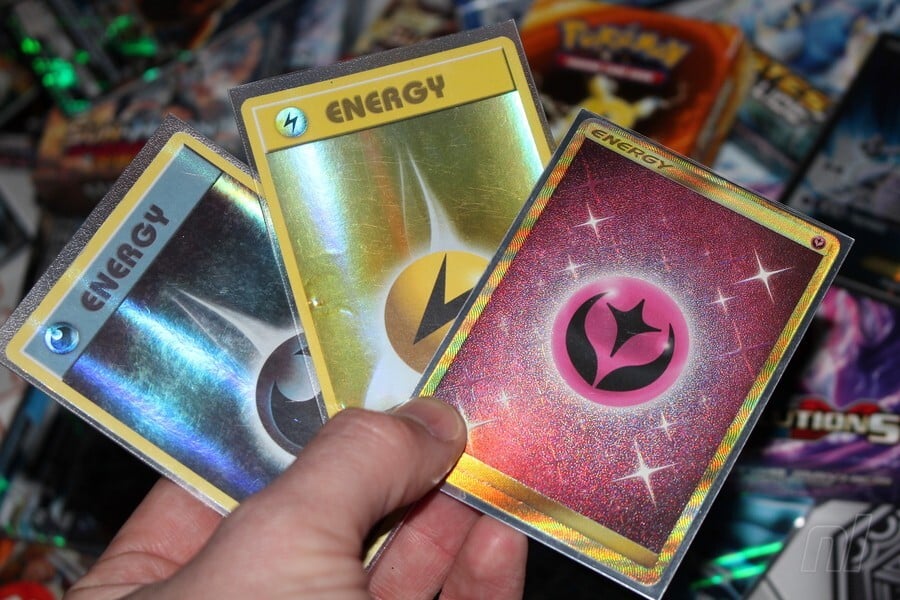
The structure of each turn goes as follows:
- Draw a card from your deck
Then, perform the following actions in any order:
- Put any number of Basic Pokémon from your hand to your Bench until you have 5 (or amount set by abilities or trainer cards) on your Bench
- Evolve a Pokémon. With the exception of some abilities and Trainer cards, you can't evolve a Pokémon on the turn you played it
- Use Abilities. Some Pokémon have got abilities. Some activate when you play the card, others are latent and are always active and others activate when you wish them to
- Attach an Energy. You can attach one Energy from your hand per turn. There are Abilities & Trainer cards that can alter this
- Retreat your Pokémon. You may retreat your Active Pokémon and switch it with one from your Bench. You may need to discard a required amount of Energy from your Pokémon to do this. This is called Retreat Cost and can be found on each Pokémon's card and is typically between 0 and 4
- Use Trainer cards. As stated above, you can use Item cards and Pokémon Tools any number of times during your turn but can only use Supporter cards once per turn
- Attack. Attacking requires you to have the required energy. You then put the correct amount of damage counters on the opponent after factoring in Weakness, Resistance and any other effects on the Pokémon
When you attack, your turn ends so make sure you have done everything you want to do before attacking. You can also end the turn without attacking either by your choice or through the effects of other cards.
Pokémon Trading Card Game Formats
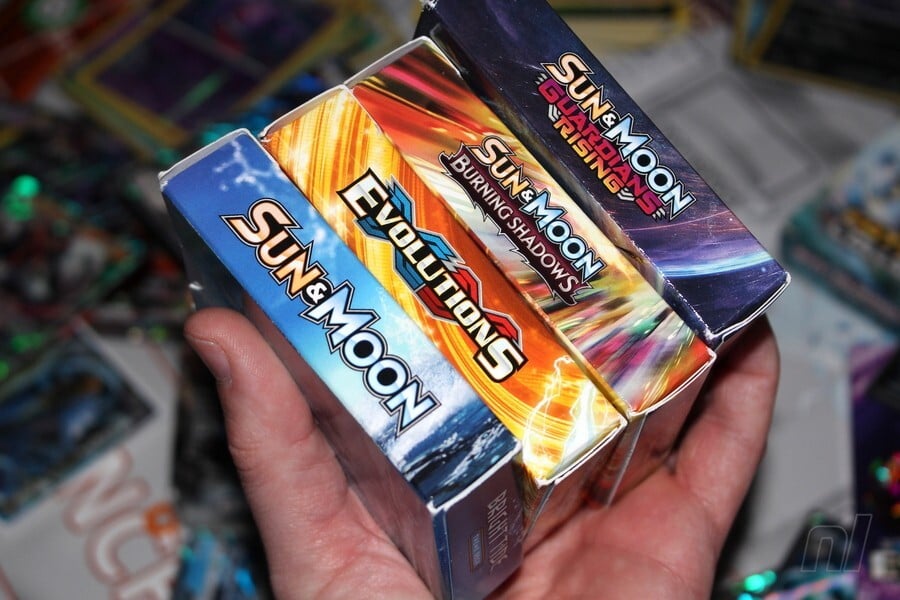
Even though there have been over 70 Pokémon Trading Card Game sets released in the west since the first Base set, not all the cards are usable. This means you don't have to go way back to get cards with certain effects. In official competitive play, there are two different formats:
Standard Format - This is the main format and rotates every year. At time of writing, all card sets from XY BreakThrough onwards are legal. New sets get allowed in Standard on the third Friday of the month the set was released in. Same goes for three weeks after a Promotional Card is released through various means.
Expanded Format - This format allows for more open play, allowing for all cards from the Black & White series onwards. Like Standard, it does rotate in time, but it is far more flexible.
With the two formats, it keeps the game fresh and stops players relying on specific strategies. For example, Shaymin EX from Roaring Skies was legal in Standard Format from 2014 up until September 2017 and was a staple of so many decks, but now that it cannot be used in Standard, players have to look for new strategies.
Over time, The Pokémon Company reviews cards to see if they are broken and some may get banned or corrected. You can find a banned card list on the official site. For full details on the rules, check out the official site here and here.
Pokémon Trading Card Game: Deck Building
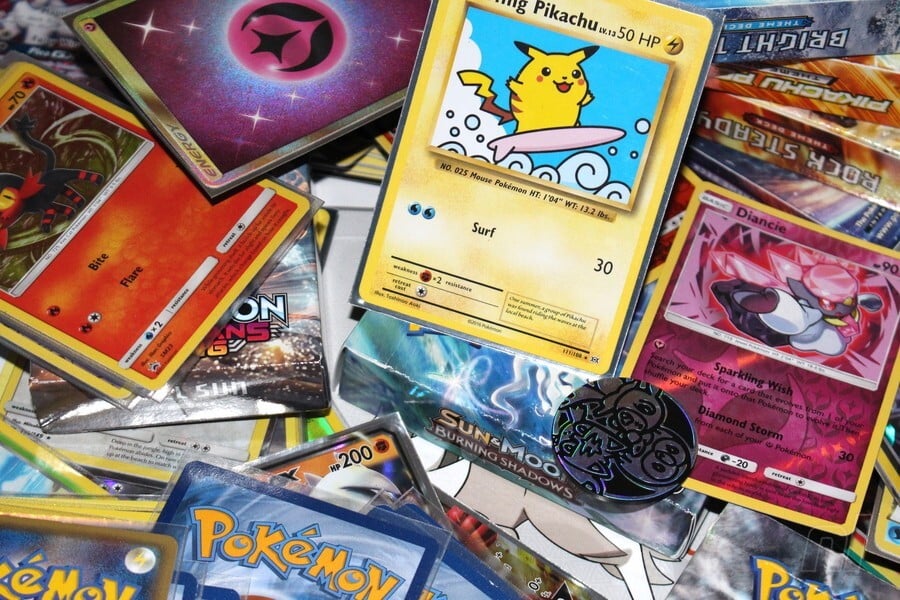
Deck building is something for which perfect advice simply doesn't exist. Each deck depends on your style of play, whether you want to be a more offensive player or more strategic.
Each deck can only have 60 cards in it, but there are no limits to how many are Pokémon, Trainer or Energy cards you have, other than the limit of no 4 cards with the same name in a deck. In theory, you could have 4 Pokémon cards, 30 Energy and 26 Trainer Cards, if you really wanted to.
When making a deck, you need to think about what you want to do with it. With Trainer cards, you will want to focus on those which allow for you to find the cards you need to win, such as cards that let you search for Pokémon or other Trainers - such as Ultra Ball and Vs. Seeker. This might sound like strange advice but don't try to fill a deck up with Pokémon as that'll prevent you from doing what you want it to do. Focus on just a few species or evolution chains and work from there. There are lots of resources around the Internet that can help with team building, but it's often situational and there is no such thing as a "perfect" deck.
Pokémon Trading Card Game: Getting Started
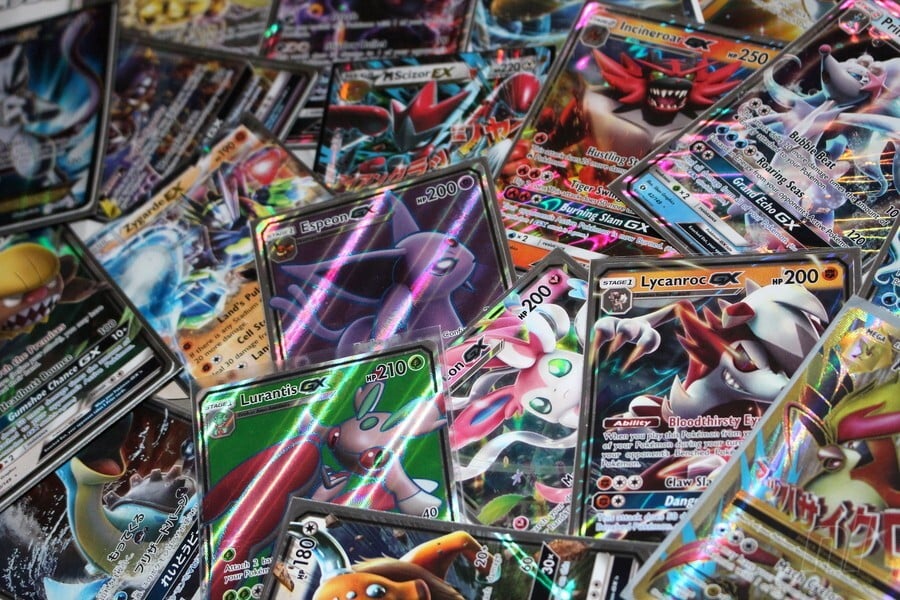
A good way to get started is to find one of the many Trainer Kits you can find, such as the current Alolan Raichu Vs. Lycanroc. These kits are designed for people who are totally new to the game and provide two 30 card decks which are ordered in a perfect way to showcase how to play the game, with all the rules and various effects.
Please note that some external links on this page are affiliate links, which means if you click them and make a purchase we may receive a small percentage of the sale. Please read our FTC Disclosure for more information.
There are also Theme Decks. Theme Decks come out with each set and provide a full 60 card deck utilising cards from the new set and previous sets, and are often themed around certain Pokémon and/or types. These are a step up from the Trainer Kits in that they are fully fledged decks which mean you can get started right away, but they are typically not of much competitive value. You'll need to invest on booster packs to obtain rare cards, a process which is costly and time consuming. However, if you're simply interested in having fun with friends and don't want to play at a competitive level, then Theme Decks are a good place to begin.
Pokémon Trading Card Game: Places to Play
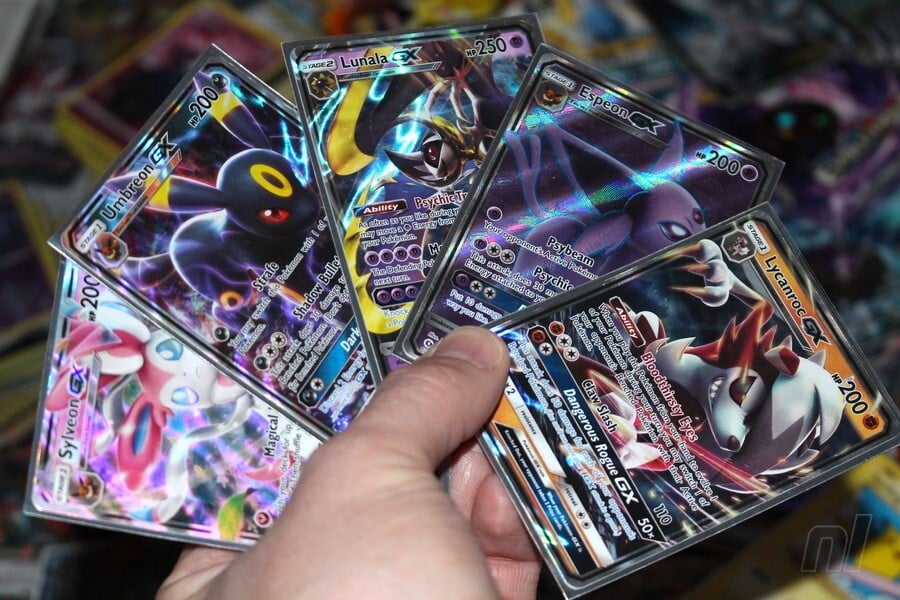
While playing with friends is fun, there are lots of local tournaments being held in card shops around the globe, not to mention the official Play! Pokémon events that lead up to the Pokémon World Championships. However, there is another way. Each Pokémon booster pack comes with a code to redeem in the PC and Tablet game, Pokémon Trading Card Game Online. Here, you can build decks using virtual cards and play with other players around the world. It's a great way of getting into the game and testing to see if your strategies will work.
As we said at the start of this piece, it's not intended to be an exhaustive guide to the Pokémon Trading Card Game - it's such a deep and involved experience that we'd need many more words to do that. Hopefully this taster guide has given you some idea about how to get started though, and there's always scope for more detailed guides in the future - so let us know what you think by posting a comment below.





Comments 35
Let me be the first and probably only people to note that the japanese cards are 3X better. Unfortunately local leagues seem to have a problem with them... The Sun Moon trainer kit is really bad. Not in a "not competitive" way but whoever pulls Raichu first wins way.
Power creep ruined this game.
I don't really care much for playing the Pokémon TCG, but I would absolutely love to collect them. But there are so, so many of them, and if I'd collect them, I'd want to have all of them, and that's just impossible at this point with how many different cards there are, not to mention the various variants and probably a whole bunch that never came out outside of Japan. I envy the folks who have been able to keep a (mostly) complete collection thus far, I can only imagine it would be an absolutely massive and beautiful collection.
..I'll stick to amiibo collecting.
DON'T GET STARTED! IT'S A TRAP! IT DEVOURS ALL YOUR TIME AND MONEY. ONE CARD JUST LEADS TO ANOTHER! IT NEVER ENDS.
@Yosher This is me in a nutshell. I'd love to attempt to keep on top of them, but with the amount they release on an annual basis, it's just too much of a time-consuming and expensive hobby for me. I do find myself purchasing a few packs or themed decks here and there, however. Nothing like the element of surprise!
Great piece though, I'll be sure to come back to this should I ever want to delve into actually playing!
They were banned at my school after one person got stabbed for his cards
I like PTCG but haven't played at all for few years. I'm currently more of a fan of the Japan exclusive Fire Emblem Cipher. I wouldn't mind a game like Pokémon Trading Card Game on GBC. I held hope for translated PTCG2 for 3DS VC but I guess we are never getting it.
I got my oldest into them as a stepping stone to Magic the Gathering. He played Pokemon for a little and still does when family members are around and playing. It never accomplished what I wanted it to as he really doesn't like either Pokemon or Magic.
However, my youngest son is fully into Pokemon. He enjoys collecting more than playing but loves to play when others are available. He'll also jump online every once and a while. We typically don't build our own decks because our collection is erratic. We never seem to have enough of the same Pokemon to make a deck work....so we usually buy the Theme decks and use them to play with. Once you have a nice size collection of them, it's fun to just randomly pick one and start a match.
My nephew actually goes to local tournaments and pre-releases so he often tells my son which of his cards are valuable or good for trading.
....But like Magic, it never ends! It's not like the early days of collectible card games where the same cards could be found in different sets so finding them was realistic. Now, you need to buy online or buy 6 booster boxes in order to find the cards you need for a deck; and by the time you do that, the next set came out!
Love the card game. Just recently got back into it. It is expensive if you want a competitive deck just FYI, but once you get playsets of the staple trainer cards (energy is cheap and plentiful) all you'll need to do is get the Pokemon after that to have multiple deck builds.
Also don't even bother with booster packs, booster boxes, etc. unless you're collecting. If you're actually playing the game buying singles is wayyyyyyyyy cheaper. I would recommend a theme deck that fits your fancy and an elite trainer box to get started and go from there with singles.
I apologise in advance if I missed anything with this.
It's so easy to forget simple things when dealing with the TCG.
@Kalmaro Power creep is an issue with pretty much ever TCG. What ruined this game for me, is simply there are much better TCGs out there, mechanically. I played Pokemon TCG when it first game out, and stopped a couple years later. I revisited a couple years ago, and played with my brother and some of his friends. It was fun, but after the initial fun wore off, I was left with a pretty boring game (In my opinion) outside of the art and nostalgia I had for the Pokemon themselves.
Also note that GX battle boost has over 115 numbered cards but max 70 per booster box, with lots of reprints. But then you see that new Lillie and Eevee and you pre-order a box on Ami Ami. Meanwhile I'm going to try and collect everything by Yuka Morii if I can.
@marnelljm It's way cheaper if you just want to get a deck quick and have fun, I'll agree. The way me and my younger brother did it though was we bought a bunch of booster boxes and put in the work and research of selling a ton of stuff on eBay. That was fun in and of itself for about a year, but then it became too much of a hassle, took up too much space, etc... So I sold off my entire collection (Singles only, the rest bulk to my brother/his friend) and I actually now play exactly how you recommend - I only have 2 decks now, no other cards. If I continue to play, it will definitely just be by purchasing singles to make one good deck.
An easy way to learn the basics would be by playing the online game... it gives you starter decks and has a pretty good tutorial.
Personally I just collect the physical cards (my aim is to collect the entire Pokedex in card form) but do still play the online game a little... mainly due to the code cards you get inside packs.
@roadrunner343 If they came out with a newer trading card game, like the old school one on Gameboy, I'd buy it in a heart beat. I like games where they have rare cards that you can work for.
I don't like games where they have rare cards that you have to drop hundreds for just to have a chance of getting one. That and the power creep is so fast, you HAVE to keep buying cards so fast to keep ahead. Plus, they keep outlawing older cards in tournaments.
There's just no way I could keep up without spending a ton, and I'm purely a casual player.
@roadrunner343 it can be a hassle for sure especially if you collect. I have a couple competitive decks my girlfriend and I play with (she hasn't gone to a tournament yet but I'm trying to get her to go haha). One of the biggest issues I've seen in theme decks is the lack of good trainer cards. They are the engine of decks and they should be the main focus. Once you've got playsets of those you're golden.
@Kalmaro I'm in the same boat. I would definitely play a new TCG released digitally - if it were buy/pay once, and play. I've played the TCGO, and it's okay, but it's an investment as well if you actually want to get competitive desks. Ultimately, I couldn't justify the cost or time commitment of playing the TCG anymore (Again, I was a bulk buy/resell kind of guy for a year or so). It was fun while it lasted, but ultimately I am a casual now, so it was time to move on.
EDIT: @marnelljm Agreed, trainers are pretty much the most important. And of course, Shaymin's and Hoopa EX there for a while =D Even then, as a more casual player, it's frustrating to know that half of your deck will not be play legal in a year or so. Which also causes the value of cards to plummet. I sold 4 Shaymin EX's for around $80 each and 2 FA for about $95 if I recall correctly. Looks like they go for around $15 now. As someone who didn't want to make a huge cash investment, I had to let them go... which sucked, because I wanted to use them, but I was also fairly certain they would be worth next to nothing once they rotated out.
@roadrunner343 Yep, pretty much hit the nail on the head. Whenever you get a shiny new card you better enjoy it all you can for half a year before they ban it. Then if you want to keep playing with it you have to contend with all the other cards that time forgot.
I liked TCGO too but I just can't get motivated to keep up with it.
I can't wait for the next expansion.
I just stick with Magic, thanks.
Never understood the stigma some card games have with their learning curve. I've seen so many people freak out over the concept of energy cards in Pokemon, yet it's by far the easiest card game that I've learned. Meanwhile things like Yugioh have the reputation of pick up and play, but in reality have tons of obscure rules on priority, and using too many terms that are close to synonyms yet have different effects entirely like negate vs destroy.
The best way to enjoy casually playing with Pokemon is to just by a starter deck that has Pokemon you like it, and have whoever you plan on playing with to pick a deck from as close to the same series as possible.
I remember that no one played this game when i was a kid. It was all about collecting.
Good article. I don't play this, but I have a roommate who at least used to and a nephew who does. They've both tried to get me to play, but it's hard to find time to get into something like this.
I actually didn't know they phased cards out in competitive play. Personally, I think if they're going to do that it should be because the cards are so powerful as to be broken, not just "this is a 2014 card and is thus disallowed." Doesn't get more pay-to-win than that.
I love playing and collecting Pokémon TCG. It can be a pricey hobby if you don’t know where to buy your stuff. The game is really fun and competitive. I reccomend you check out:
www.psychoturtlegames.com
they always have the best prices on everything. Also, if you are in southern California they host events once a months for people that don’t know how to play and teach you. The two owners Josh and Robert are so down to earth and friendly. They are Nintendo and Pokemon fans and even have their own decks to battle customers that want to take them on. Josh even helps you build a deck. They give you missing trainer and energy cards. Highly recommended
I played the game competetively from 2009 to around 2014. I liked the Diamond & Pearl to second HGSS set era the mst during that time.
I've been collecting Pokemon Cards ever since the packs have been showing up at Dollar Trees in my area. It's been fun, it makes me feel like a kid again. So far I've found Mega Charizard Y, Darkrai GX, Tapu Koko GX, and Kammo-o GX. These cards are so much prettier than they used to be, so it's a good time to collect.
But I tried to get back into actually playing the game a few years ago and they kinda lost me with the rare candies and Pokemon EX.
Only ever completed the Base and Team Rocket sets. Gotta looooooooooong way to catch up should I ever decide to collect em again. XD
Might wanna consider buying the TCG Videogame on the 3DS Virtual Console as well. It won't teach you the latest features or gimmicks but it will give you a good idea on how to play the game despite its age....
@FinalFrog Only in hardcore fight clubs.
Seriously though, no that is not a rule.
TCGO doesn't cost money
@FinalFrog No! You don’t lose your card to the winner lol. I remember back in the day the older kids would trick me and tell me the loser would have to give up their cards. Dang bullies! They got me every time😂
Why the guide? (I of course subscribe to why not, but I mean more in the sense of did I miss some news about it? Is the pc game coming to Switch?)
Expensive and waste of time when you realise you are a million cards away from owning a half decent deck, and by that time, why bother. Tried it for a month, realised my mistake after buying boosters and hearing my wallet crying.
Don't do it folks. Regret is inevitable.
I so wish they would make one for the 3DS with DLC for future cards. I love both of the GBC games, especially the 2nd one that has been translated.
The classic cards were really good, I like that the game is fairly easy to learn, but has a fair amount of strategy. They were fun to collect, had good art, and it was fun to play with others. I remember doing extra chores to buy extra booster packs, I dug out a bush from the roots for extra money ;p
That said, the latest cards aren't very good imo in terms of balance. Mainly the EX pokemon cards ruin everything, because you can have EX starter pokemon. If ALL of them required heavy and diverse energy requirements it may not've been an issue, but being able to immediately place starter pokemon with 100+ HP who can attack quickly at very high amounts of damage is...game balance breaking. It's unfortunate, but it was fun while it lasted.
That said! If anyone is interested in playing the game without spending a lot of money, I 120% recommend picking up the Virtual Console title, Pokemon Trading Card Game on the 3DS for $6 (original was gameboy color). The game has mostly the classic cards, and has fantastic music. It's a solid game in it's own right, and has the pokemon format of battling through gyms to become the champion (except with no towns or much walking). If the music came out on itunes I'd buy it in a flash.
I just bough the trainer kit a couple of days ago and I'm waiting for the weekend to play with a friend, using real cards . I played more online until now, using theme decks.
I would like to have something like Magics Duel Decks; they are quite fun for casual gaming with friends, as they are made for playing one against another. Pokemon Theme Decks doesn't seem to be very well balanced for playing one against another.
I'm just starting out with the TCG and this article is very informative and helpful. Even though I already know most of what is included, it is presented in such a way to make everything clearer. So thanks for the help!
Your mention of the Online version is exactly what I am doing (feel free to find me at CDanChan) and that is proving to be great fun! I'm just starting to dip into deck building which I find the most daunting aspect of the game. Your description helped calm me a little!
Show Comments
Leave A Comment
Hold on there, you need to login to post a comment...